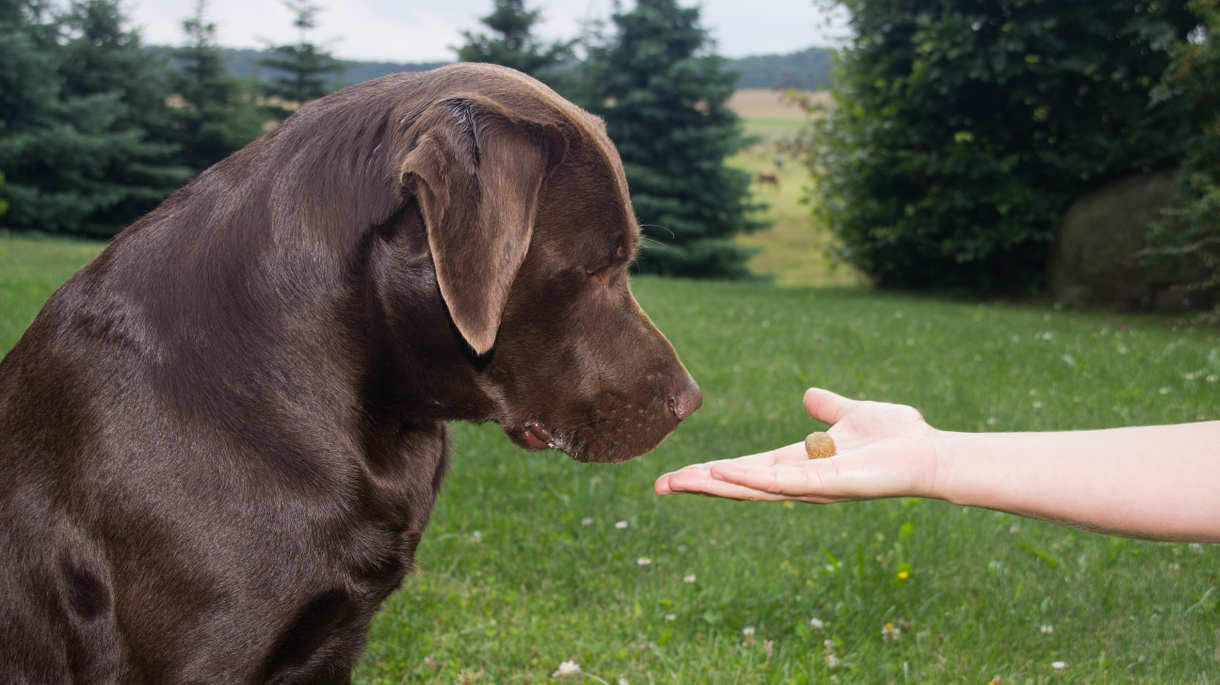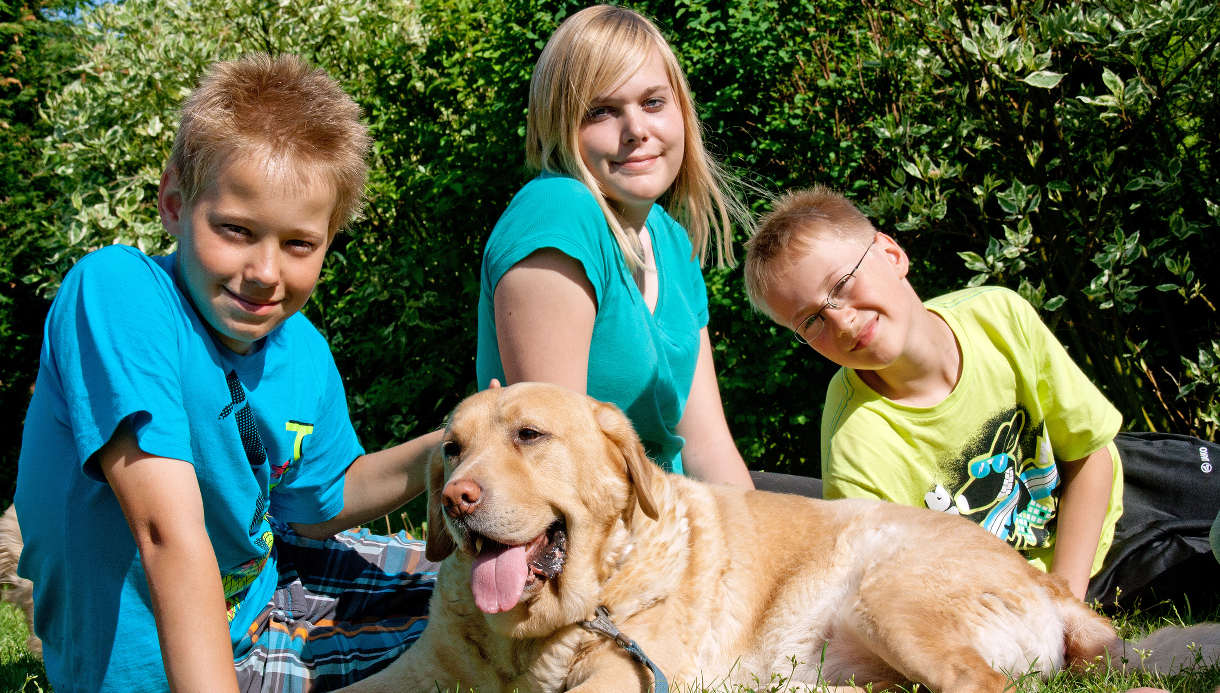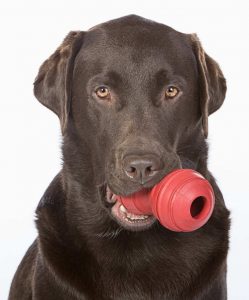Choosing how to train your Labrador can be quite a big deal.
There is so much conflicting information out there. The truth is, Labrador training methods have changed quite dramatically over the last few years and in order to chose the right method, you need to know what works and what doesn’t.
Let’s face it, there’s no point in spending vast amounts of time training your dog, if he is no better behaved at the end of it.
Your Labrador training methods should be fun
It isn’t just about how effective your training methods are, though of course that is important. You also need to know which training methods are going to make for a happy and contented dog. So in this article we are going to look at the four main approaches or philosophies of dog training. And help you to choose the right one for you and your dog.

We’ll look at some specific types of training within those broad philosophies, and show you what works and what is best left on the shelf. At the bottom of the article I’ll give you some links to lots of helpful training resources on this website. Let’s start with the Big Four
Four approaches to Dog Training

Dog training styles can be divided quite neatly into four different ‘schools’ of thought. We’ll give them descriptive names so that we all know what we are talking about. They are:
- Traditional
- Modern
- Balanced
- Crossover
The fourth one, crossover isn’t really a method as such – its more of a journey, but I’ll explain that as we go.
Traditional trainers
Most dogs, Labradors were trained using traditional techniques until around ten to fifteen years ago. Traditional training is founded on the belief that dogs are pack animals, and that a dog will obey the person he respects as the leader of the pack. Owners were encouraged to show dominance over their dogs, this meant doing things like, eating first, before your dog, and not letting him on your bed or chairs. Famous celebrity trainers from the traditional camp are Cesar Milan in the USA and for those of you old enough to remember her Barbara Woodhouse in the UK.
Traditional Labrador training methods
Traditional trainers often use methods like ‘modelling’ where dogs are manipulated into different positions. With teaching the ‘sit’ for example, the trainer may press down on the dog’s bottom and pull up on his collar. One of the features of traditional dog training is that it incorporates the use of aversives or things that dogs find unpleasant.
Things dogs don’t like
Aversive methods don’t have to include physical punishment or pain like slaps or electric shocks (though they quite often do) They can be sounds that the dog doesn’t like such as a growly voice, a squirt of compressed air, a verbal “Tssst”, a rattle bottle or discs, that kind of thing.
The use of an aversive is often referred to as ‘punishment’ and can be something as simple intimidation (making yourself big, staring your Labrador down) or the threat of physical punishment (raising a hand or stick) All these and more, are the tools that traditional dog trainers may use to control their dogs.
Modern Labrador training methods
You’ve probably heard of clicker training. You may think, especially if you first heard of it ten years ago or more, that clicker training is more suited to lap-dogs than rough tough Labradors. We’ll have a closer look at that in a moment, because clicker training is based on the principles that all modern training has at its heart.
However, clicker training is just one of many ways to train a dog using modern dog training principles, and you don’t need to use a clicker to be a modern dog trainer, (though it can be helpful) Let’s take a closer look at the modern training and find out more about it.
What exactly is modern dog training?
Modern training is based on the science of behavior. Over the last hundred years or so, thousands of experiments have been carried out, both inside and outside of laboratories, into the way that animals learn new skills. And into the way that animal behavior can be influenced. Animal trainers wanted, and looked for, ways of controlling animals that couldn’t be handled or punished – marine mammals like dolphins for example. Skills learned with these animals were adopted by dog trainers
Our understanding of dogs in particular has advanced dramatically in the last two decades. We now know an awful lot about exactly how animals learn, and about the quickest, easiest ways to influence our dogs behavior. These things have actually been tested and measured.
But I’m not a scientist!!
Many modern dog trainers are now taking advantage of this knowledge, and are using the processes described by science (operant conditioning for example) to train their dogs. Fortunately you don’t need to know any of those geeky science words, to train your dog like a pro. All you need is to follow a few rules or principles. And we’ll be looking at those in a moment.
Using rewards effectively
One of the key features of modern dog training is the use of rewards to reinforce behavior that we want the dog to repeat. And the avoidance of the use of aversives, or things that dogs prefer to avoid. Because we give rewards to the dog and because the rewards reinforce the dog’s behavior (make it more likely to happen again) modern dog training is often referred to as positive (adding something) reinforcement training. Sometimes, people just call it positive training.
Practice makes perfect
Just like traditional dog training using punishment, positive reinforcement dog training needs good timing to get good results. It takes a little skill, and it helps inexperienced trainers if they can watch and learn from a more experienced trainer to begin with.
No-one to learn from?
When positive reinforcement dog training first caught on, some people struggled to get good results, there weren’t a lot of people teaching others how to do it, and there weren’t many people that had reached very high standards in dog sports and competitions using modern methods. Because of this, people were afraid that modern methods would not be enough to get them a well trained dog. People wanted to use rewards, but they were afraid to give up punishment completely. And that’s where balanced training came in.
Balanced trainers
Balanced dog training methods were born out of a fear of the new-fangled science based techniques. Balanced training made traditional trainers feel safe. Balanced trainers use reward based methods, up to a point. But when the dog makes a mistake, they still use correction or ‘punishment’.
To start with, this might seem like a good idea, but it is actually a flawed plan. We’ll look at why in a moment. But essentially balanced training as the name suggests was intended to find a balance between the harshness of traditional and what was though to be the permissiveness of modern methods Let’s just briefly touch on crossover training before we look at the pros and cons of each method.
Crossover dog training
Crossover trainers are people who are making or have made, the transition from the old school traditional methods, to the newer science based methods of training. Most people over fifty years of age that are now using modern dog training methods (and that includes me) are crossover trainers. That’s simply because modern methods of dog training were not widely understood or used when we first started training dogs.
Choosing a method
Nowadays if you are just starting out, you can choose which method or ‘school’ of dog training you want to belong to. If you are going to train your dog yourself or to choose a dog training class, you need to know which method will suit you and your dog. So we’ll look at the pros and cons of each approach You’ll also need to know how to recognise the type of trainer you want in control of your dog, when you meet him or her. We’ll look at that too
The pros and cons of traditional training
You sometimes hear modern dog trainers say that traditional training using punishment doesn’t work. This isn’t true! Traditional methods do work. They were all we had for hundreds of years and many dogs got trained using them. So why have so many people moved away from them?
One of the family
One of the reasons is that we have a different attitude to our dogs these days. We want to be friends with our pets, they are family to us and we don’t want to be unkind to them.

There has also been a movement away from punishment generally. Fewer people slap their kids these days too. Its a social change that has accelerated in the last few years. So one of the big cons for traditional methods of Labrador training is that it incorporates punishment of some kind. Many people simply don’t want to punish their dogs.
Dominance is dead
The other big flaw, that has come to light fairly recently is that we now know dogs are not truly ‘pack animals’. Behaviors like pulling on the lead, or growling over food were mistaken for dominance when they are actually nothing of the sort. New studies have shown that most dogs don’t have any urge to take over the world. Essentially, all most Labradors want is food, fun and exercise. They have no interest in leading anyone, anywhere.
Punishment makes dogs grumpy
More importantly, we now know that the things we used to do to dogs in the name of ‘dominance’ (alpha rolls for example) actually cause aggression in dogs. Similarly, dominance based techniques used to tackle resource guarding make the problem worse and can be very dangerous. Several studies in the UK have shown that dogs which are trained using non-violent, non-physical forms of punishment are more aggressive than dogs trained without any punishment at all.
Punishment makes dogs slow
Interestingly punishment, and not just physical punishment, doesn’t just make dogs aggressive, it makes them slow to learn. This is because fear of making the wrong choice makes us unwilling to choose at all. So a dog that is sometimes punished for making mistakes, will be less keen to do anything at all if he is in doubt of the outcome. This makes it harder to teach the dog new behaviors.
What it means in practical terms is that dogs being trained using fear, can’t learn as quickly as they should and are more likely to bite someone. Which isn’t quite what we intend when we set about training a Labrador.
The success story of the decade
Progress in positive reinforcement training has been very rapid in the last ten years. At the same time as we began discovering the flaws and limitations of traditional training, we also started getting better at modern training. Modern trainers began to learn from one another, to succeed in competitions, like agility and obedience, and as people discovered more ways of training without any force at all, interest in this new science accelerated.
Modern, science based dog training has actually been the success story of the decade. From its beginnings in the laboratory and the dolphin pool, it has swept the pet dog world and is now rapidly taking over in almost all dog sports and services from the military to the film industry to the obedience ring and beyond.
Everyone’s doing it!
Labradors the world over are now trained to incredibly high standards with no force at all. That includes police dogs, guide dogs, bomb disposal dogs and more. Leading animal welfare organisations, training bodies, veterinary associations and behavioral scientists have all made the switch to positive reinforcement training. As more people began to cross-over it seems that no-one wants to go back to the old ways. The advantages of modern dog training are just too great
The benefits of modern dog training
With positive reinforcement training can teach our Labradors without force or fear. This is more fun for us, as well as for our dogs. It also means we can start training at a very early age. Even tiny puppies can share a training session using modern methods, you don’t have to wait until your puppy is old enough to cope with the stress of training, because training is no longer stressful. Dogs learn rapidly with modern training, and their ability to learn expands as they discover that it’s the choices they make of their own free will that bring rewards.
But what happened to balanced training?
There are still a few trainers clinging on the the ‘balanced training’ but these are dwindling in number. Basically because ‘balanced’ training wasn’t balanced at all, and was based on the false premise that positive reinforcement training is lacking in some way. Once people began to succeed widely with modern methods, balanced training began to die out
A well behaved Labrador
I said earlier that you don’t need to understand all the geeky science stuff to train your dog without aversives. And you don’t. But positive training is not the same as being permissive. You still want to end up with a dog that obeys you. A well-behaved Labrador that is a pleasure to take out and about. This means you’ll need to ‘get up to speed’ yourself, if you want to help your dog learn.
A basic set of rules
It isn’t just a question of bribing your dog either, you need to learn how to create a nice neat automatic response to your voice or whistle commends. To do this you do need to understand the basic rules or principles that will ensure you are successful in training your Labrador. I think you’ll find the basic rules article really helpful.
Training with food and toys

Modern dog training is a lot of fun for your dog, and fun for you too.
It won’t have escaped your notice that many modern dog trainers use a lot of food and toys in training. Deciding whether or not to use treats in training can be an important decision, and if it is one that you are worried about, don’t miss our article: Training treats, should you use them
Getting help
Training should be fun and our community is a great way to make sure that your experiences with your dog are good ones, so don’t forget to join our wonderful Labrador forum for help and moral support along the way. If you want to join a training class to help you, there is plenty of choice now for those wanting to use modern methods
Finally, here are all those other Labrador training method links I promised you. I hope you find them helpful, as you train your dog,
- Why your Labrador puppy needs a harness
- Training a Labrador puppy
- How to manage a strong pulling Labrador
- How to find a good Labrador training class
- 10 ways to reward your Labrador without food
- Faking it! A Labrador training strategy
- What is modelling in dog training?
Need more information?
Training a dog without force or pain is now easier than ever before Most of the obstacles that faced those that want to try modern labrador training methods have been removed. There are organisations in most countries that accredit and recommend modern dog trainers.
In the USA Victoria Stillwell is a leading proponent of force free training and has a network of trainers across the states. In the UK you can contact the Association of Pet Dog Trainers.
If you have any questions or would like us to provide information on a particular topic, please don’t be shy! Just drop your suggestions in the comments box below, we’d love to hear from you or to meet you in the forum.
The Labrador Site Founder
Pippa Mattinson is the best selling author of The Happy Puppy Handbook, the Labrador Handbook, Choosing The Perfect Puppy, and Total Recall.
She is also the founder of the Gundog Trust and the Dogsnet Online Training Program
Pippa's online training courses were launched in 2019 and you can find the latest course dates on the Dogsnet website


















Hi. I’m finding my 9mth old black lab a little hard to train atm. She was doing really well to begin with but since she had to go into kennels for two weeks at age 6mths she does not listen and it takes her a long time to even sit when told. I can tell her sit maybe about 12 times before she will do it. Even then I may have to make a move towards her before she will do it .When she does I give her a very small amount of reward. I am also finding that she is beginning to play very rough by grabbing at my hands and sort of nipping while jumping back and forth towards me. I don’t like to think that she is being aggressive towards me but if I try and get her to stop by saying no, she still carry’s on. I have to then grab her collar untill she calms down, this is the only way to stop her. She is very strong and pulls on her lead very strongly, again not listening. I have had 4 labs over my lifetime in all the colours and this, my second black one, is the worse to train. I am 70 this year and begining to wonder if i have choosed the wrong breed!! Is there any advice for me please? Thank you for any input
Hi Sharon, I’m sorry to hear that you are struggling with your young Lab. You might find it helpful to join our friendly forum here: https://thelabradorforum.com/ There are lots of experienced owners there who are happy to help and have experienced similar problems. All the best, Lucy
Hey Great Article,Thanks. About 4 months ago I bought a dog for the first time in my life (pitbull). But I have some problems with dog training and thinking about hiring a dog trainer online. These dog trainer, my uncle introduced me who had the same problem with his dog and now everything is fine. Do you think it’s a good move to hire a dog trainer? I keep reading good reviews about her but I am unsure if it will still work on me. At this time I can hire this trainer at a very low price,so if possible can you leave me feedback on wether I should do it or not. It would mean a lot coming from an expert in this field.
The Dog Trainer that my uncle used –
http://bit.ly/2NH74TZ
Hii my name is Nitin.I am from Bengaluru india. This is my first time I brought a lab retriever puppy. I want to train him but I didnt know how to start train him can you help me out with the videos.
‘Several studies in the UK have shown that dogs which are trained using non-violent, non-physical forms of punishment are more aggressive than dogs trained without any punishment at all.’
‘Interestingly punishment, and not just physical punishment, doesn’t just make dogs aggressive,
Contradictory but I suppose is just a typo.
Hi Adaly, I’m afraid I’m not sure where the contradiction is here?
The first quote explains that dogs who are trained using any form of punishment are more aggressive than those trained without. For example a dog who is intimidated will be more likely to be aggressive than one who is not.
The second explains that it’s not just aggression which is the issue, that any form of punishment, physical, intimidation or otherwise, causes a delay in learning.
If you let me know where your confusion lies exactly, I will be happy to clarify further 🙂 Lucy
Hi thanks for a great article it nice to know other people feel the same way in regards to training:) I was wondering if you have any information on dog anxiety? My 1 year old lab had lead agresion and suffers from anxiety I was wanting to see if there was anything that can help her calm down. I luv walking her but if she sees another dog whitest she’s on lead she goes crazy ?
But sometimes if she gets particularly hyped up then no aversion affects her. So you have to be careful you don’t increase the harshness to extreme levels like the ones mentioned in your article. A balance is needed. I almost think the dog respects us more when we tell her when she is doing well and tell her off when not than just using positive only methods.
This is a very useful article. I have experienced different approaches during one to one lessons with professional gundog trainers but all use aversives.
We have a 14 month lab working lines. She is very hot and strong prey instinct. Spent 12 months with positive only trainers for loose lead healing with no effect. Spent 2 hours correcting her with a lead check when put of position and she now walks beautifully. No more hurting her and us when pulling like a train. So in this case I think the aversion worked and on balance is better than long term pulling.
Brilliant article. I (and my first Cocker) were trained by an aversive trainer and have been working my way back to a less aversive approach especially in retrieving. With generally better long-term results.
As you say, I have yet to find a rewards based approach to too much scent and associated stop-whistle deafness.
Thank you for the time spent putting this together it really is very informative.
Thanks for your kind comments Alistair 🙂